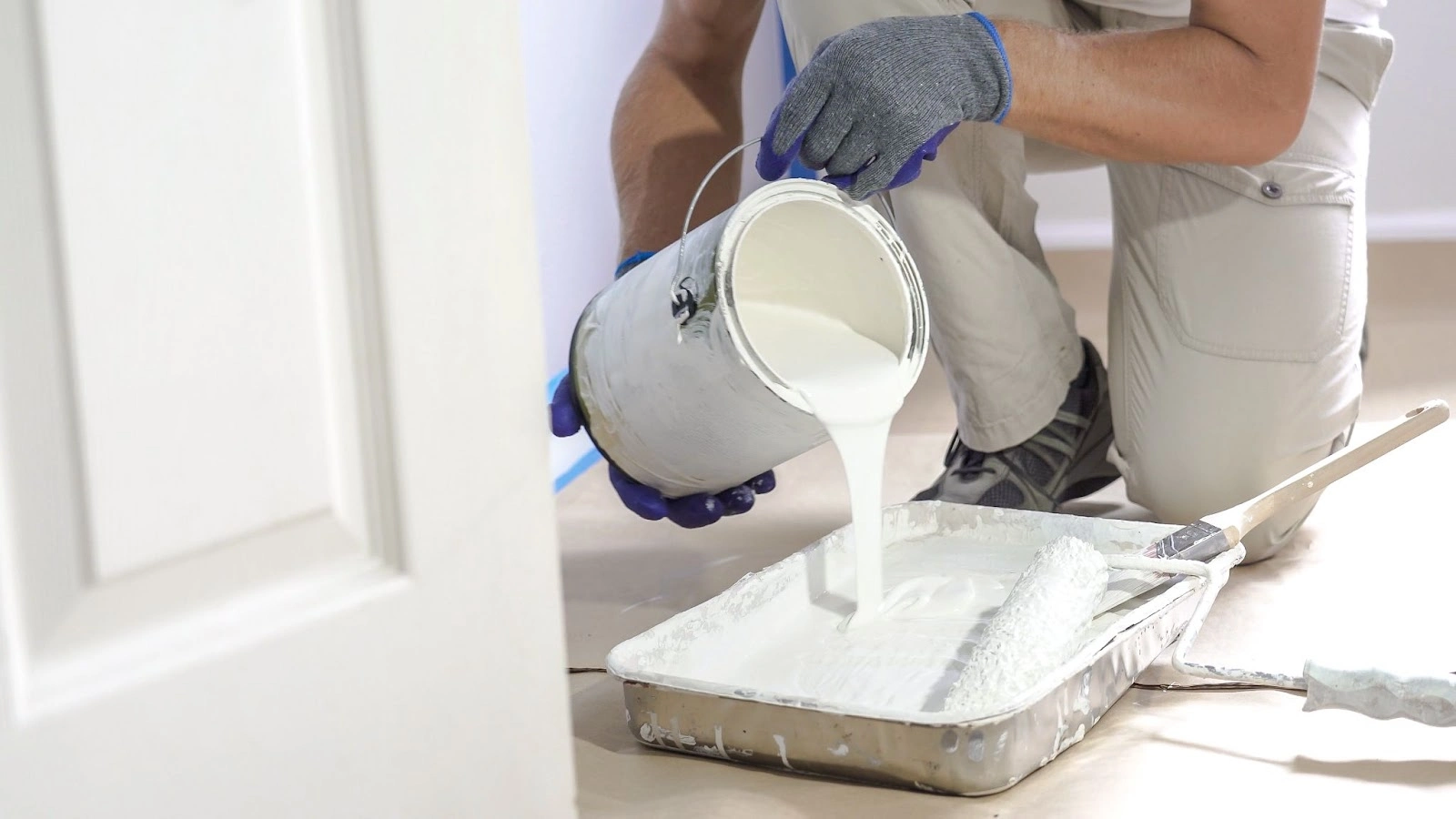Can You Use Exterior Paint Inside?
Do not use exterior paint inside because it releases dangerous airborne chemicals. In a nutshell, the additives used to make exterior paint resilient outside can be detrimental to your family’s health when applied indoors.
But don’t worry — if you accidentally use exterior paint inside, you can prime the walls and then use interior paint over the exterior paint.
Read on to learn about the dangers of using exterior paint inside:
- Why exterior paint used indoors is harmful
- Reason 1: High VOCs
- Reason 2: Harmful additives
- Reason 3: More susceptible to deterioration
- Reason 4: Ingredients used can cause allergic reactions
- Exterior vs. interior paint
- FAQs about using outdoor paint inside
Why Exterior Paint Used Indoors is Harmful
Exterior paint is made to withstand extreme weather conditions such as rain, heat, and freezing temperatures. It contains resins that help the paint expand and contract to protect it against changing weather conditions. It also has additives to help it resist fading and discoloration from UV rays, and decay. These substances can be harmful.
Some homeowners may assume that using exterior paint indoors provides prolonged durability, given its strength of. However, this is not necessarily the case because exterior paint is not formulated for application on drywall
Reason 1: High VOCs
Volatile organic compounds (VOCs) are gases that are released into the air from some products and cause ozone air pollution. Exterior acrylic paint, specifically, contains a greater number of VOCs than interior paint does. The VOCs emitted from exterior paint can cause breathing problems for people with allergies. Exterior paint may also continue to release harmful toxins even after it dries.
Reason 2: Harmful additives
The additives that are used to make exterior paint durable outdoors are not suitable for indoors. This is because exterior paint is designed to cure and settle outdoors, where people’s air quality is not as easily affected.
Reason 3: More susceptible to deterioration
When used indoors, exterior paint is more susceptible to deterioration and scratches than interior paint is.
Reason 4: Ingredients used can cause allergic reactions
The ingredients that are used in exterior paint to thwart mildew can cause odors and allergic reactions when applied in restricted, confined areas.
Exterior vs. Interior Paint
The main difference between exterior and interior paint is the resins (what binds the pigment to the painted surface) they contain.
The resin in exterior paint is made to endure temperature changes and resist mildew from moisture. As a binder, exterior paint resin is more durable and better able to resist chipping, peeling, and fading from sunlight than are the more rigid interior paint resins, which are designed to make interior walls scrubbable and stain resistant.
The ingredients in exterior paint give off high VOCs, which is the primary reason why you wouldn’t want to apply it indoors. Interior paints, on the other hand, don’t release nearly as many toxins.
FAQS about Using Outdoor Paint Inside
1. Can you use exterior latex paint inside?
No, do not use exterior latex paint inside because of the dangerous chemicals released.
2. Can you use WeatherShield® paint indoors?
No, do not use WeatherShield® paint indoors because it’s designed to protect your exterior from weather conditions, and can be dangerous when applied indoors
3. Can you use exterior paint inside a garage?
No, do not use exterior paint inside a garage due to the long drying times required and the unhealthy fumes exposed during painting.
4. Can you use exterior acrylic paint inside?
You should not use exterior acrylic paint inside because of the harmful chemicals released into the air.
5. Can I use exterior paint inside my bathroom?
No. Using exterior paint inside a bathroom can be dangerous because of the number of VOCs released that can negatively impact the indoor air quality. These chemicals will linger longer in confined spaces such as bathrooms and increase moisture and mildew.
6. Can you use exterior paint for interior trim?
Exterior paint should never be used for interior trim because of the strong odor and contaminants released during painting.

Why Choose Five Star Painting as Your Interior Painter
Would you like more advice on what interior paints will help keep your family safe? Our experienced painters have the know-how and decades of experience to get the job done right the first time around.
Some benefits of using our professional service include:
- Specialized equipment: Specialists are equipped with the right tools and equipment to conduct their work safely and efficiently. We bring the proper protective gear, paint, and other specialized equipment to ensure a successful paint job.
- Advanced preparation and cleanup: Our pros go above and beyond to patch holes, sand surfaces, and protect the surrounding space and furniture to prevent damage to your belongings. No hazardous materials or debris will be left behind.
- Quality painting products: Our experts use only quality paint products that are safe to use indoors, from brands such as Sherwin-Williams, Behr, and Benjamin Moore. We will recommend appropriate paints and finishes that have low VOCs and are environmentally friendly.
- Proven expertise: We are familiar with effective surface preparation techniques, paint application methods, and safety procedures. Our expertise minimizes the risk of accidents, injury, or damage to your property.
Call your local Five Star Painting, request a free estimate online, or explore our residential exterior painting services today!
 Click to call
Click to call




